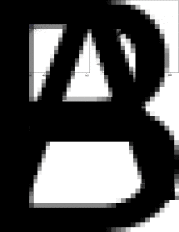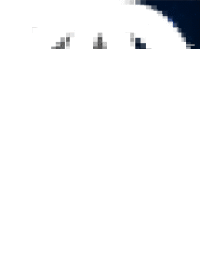Progression of asexual to sexual stages of Cystoisospora suis in a host cell-free environment as a model for Coccidia
- PMID: 34193323
- PMCID: PMC8426156
- DOI: 10.1017/S0031182021001074
Progression of asexual to sexual stages of Cystoisospora suis in a host cell-free environment as a model for Coccidia
Abstract
Coccidia display a characteristic life cycle, where the parasites switch between asexual and sexual development, resulting in an environmental stage, the oocyst. The entero-pathogenic Cystoisospora suis, a coccidian parasite of swine and close relative to Toxoplasma gondii, undergoes development in one host-cycle. Despite the well-described intracellular development of Coccidia, the C. suis life cycle can progress in an in vitro, host cell-free system after initial intracellular development of merozoites. A novel host cell-free cultivation method was developed by transferring purified merozoites from cell culture supernatant (dpi 6) to culture medium and incubating them for 5 days to induce their progression to sexually differentiated stages. The development of sexual stages in the absence of host cells was verified by morphological studies, flow cytometry and the transcription analysis of three genes linked to sexual stages (HAP2, OWP and TyRP). The host cell-free culture permits the sexual development (and with this, the complete life cycle progression from sporozoites to oocysts) of C. suis in vitro and provides a new tool for detailed research on the development of C. suis and possibly other Coccidia. This will also be useful for the evaluation of novel drug or vaccine targets in these parasites.
Keywords: Cell-free culture; Isospora suis; gametes; gametogenesis; gamonts; qPCR.
Conflict of interest statement
The authors declare that they have no competing interests.
Figures






Similar articles
-
Inhibition of sexual stage-specific proteins results in reduced numbers of sexual stages and oocysts of Cystoisospora suis (Apicomplexa: Coccidia) in vitro.Int J Parasitol. 2022 Dec;52(13-14):829-841. doi: 10.1016/j.ijpara.2022.09.006. Epub 2022 Oct 18. Int J Parasitol. 2022. PMID: 36270547
-
The transcriptome from asexual to sexual in vitro development of Cystoisospora suis (Apicomplexa: Coccidia).Sci Rep. 2022 Apr 8;12(1):5972. doi: 10.1038/s41598-022-09714-8. Sci Rep. 2022. PMID: 35396557 Free PMC article.
-
Characterization of Cystoisospora suis sexual stages in vitro.Parasit Vectors. 2020 Mar 18;13(1):143. doi: 10.1186/s13071-020-04014-4. Parasit Vectors. 2020. PMID: 32188507 Free PMC article.
-
Cystoisospora suis - the non-model model coccidium.Adv Parasitol. 2025;127:1-25. doi: 10.1016/bs.apar.2025.03.001. Epub 2025 Apr 16. Adv Parasitol. 2025. PMID: 40588334 Review.
-
In vitro cultivation methods for coccidian parasite research.Int J Parasitol. 2023 Aug;53(9):477-489. doi: 10.1016/j.ijpara.2022.10.002. Epub 2022 Nov 15. Int J Parasitol. 2023. PMID: 36400306 Review.
Cited by
-
Advances towards the complete in vitro life cycle of Toxoplasma gondii.Fac Rev. 2023 Feb 13;12:1. doi: 10.12703/r/12-1. eCollection 2023. Fac Rev. 2023. PMID: 36846606 Free PMC article. Review.
-
Sexual Development in Non-Human Parasitic Apicomplexa: Just Biology or Targets for Control?Animals (Basel). 2021 Oct 4;11(10):2891. doi: 10.3390/ani11102891. Animals (Basel). 2021. PMID: 34679913 Free PMC article. Review.
-
Unravelling the sexual developmental biology of Cystoisospora suis, a model for comparative coccidian parasite studies.Front Cell Infect Microbiol. 2023 Oct 25;13:1271731. doi: 10.3389/fcimb.2023.1271731. eCollection 2023. Front Cell Infect Microbiol. 2023. PMID: 37953800 Free PMC article.
-
Genetic manipulation for the non-model protozoan Eimeria: Advancements, challenges, and future perspective.iScience. 2025 Feb 17;28(3):112060. doi: 10.1016/j.isci.2025.112060. eCollection 2025 Mar 21. iScience. 2025. PMID: 40109377 Free PMC article. Review.
-
Regulation of the developmental programs in Toxoplasma by a novel SNF2L-containing chromatin remodeling complex.Nat Commun. 2025 Jul 1;16(1):5757. doi: 10.1038/s41467-025-60795-1. Nat Commun. 2025. PMID: 40593611 Free PMC article.
References
-
- Barta JR, Schrenzel MD, Carreno R and Rideout BA (2005) The genus Atoxoplasma (Garnham 1950) as a junior objective synonym of the genus Isospora (Schneider 1881) species infecting birds and resurrection of Cystoisospora (Frenkel 1977) as the correct genus for Isospora species infecting mammals. Journal of Parasitology 91, 726–727. - PubMed
-
- Bechtsi DP and Waters AP (2017) Genomics and epigenetics of sexual commitment in Plasmodium. International Journal for Parasitology 47, 425–434. - PubMed
-
- Belli SI, Wallach MG, Luxford C, Davies MJ and Smith NC (2003) Roles of tyrosine-rich precursor glycoproteins and dityrosine- and 3,4-dihydroxyphenylalanine-mediated protein cross-linking in development of the oocyst wall in the coccidian parasite Eimeria maxima. Eukaryotic Cell 2, 456–464. - PMC - PubMed
-
- Belli SI, Smith NC and Ferguson DJP (2006) The coccidian oocyst: a tough nut to crack!. Trends in Parasitology 22, 416–423. - PubMed
-
- Biester HE and Murray C (1934) Studies in infectious enteritis of Swine. In 12th International Veterinary Congress, pp. 207–219.
Publication types
MeSH terms
LinkOut - more resources
Full Text Sources

